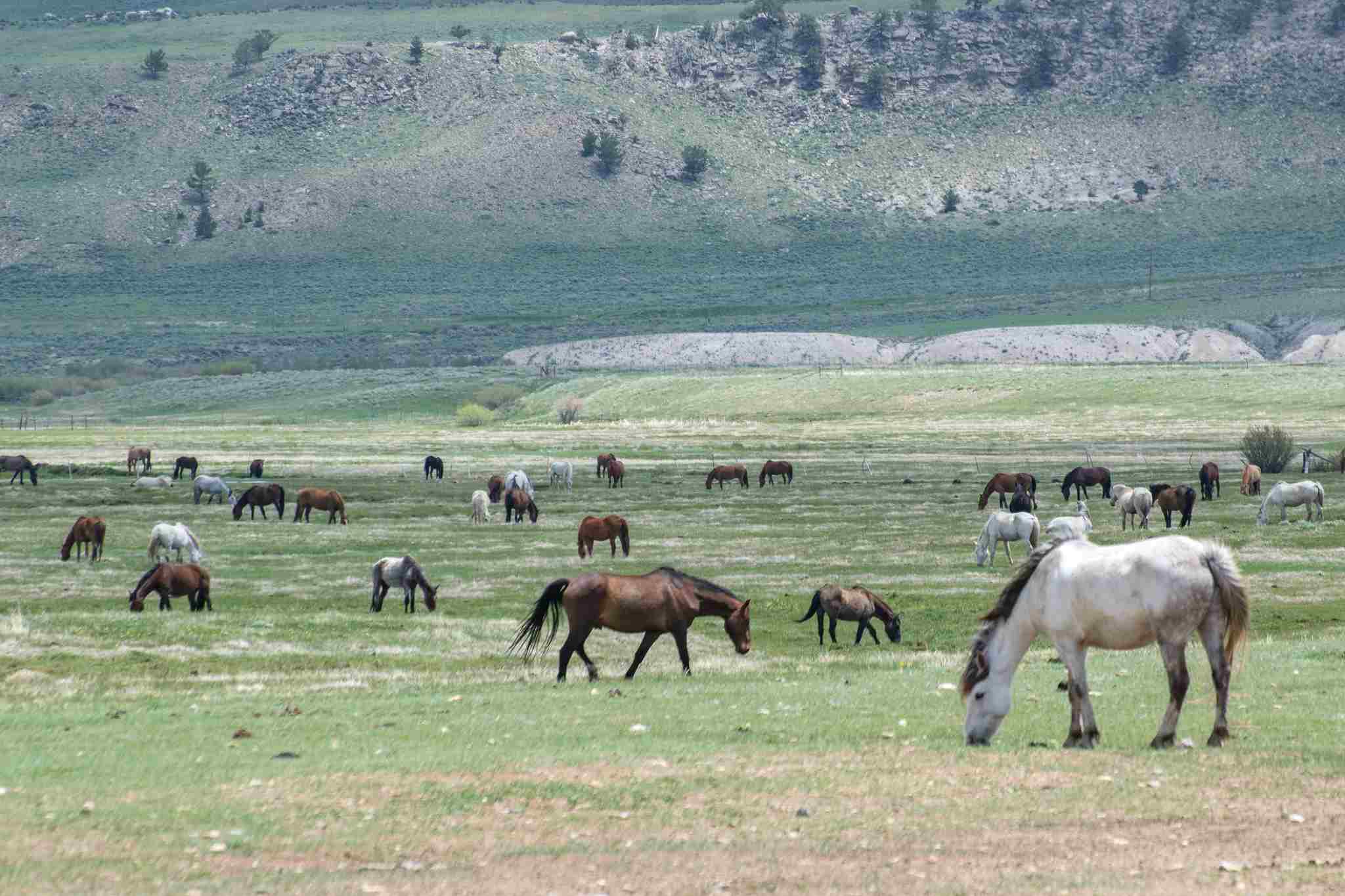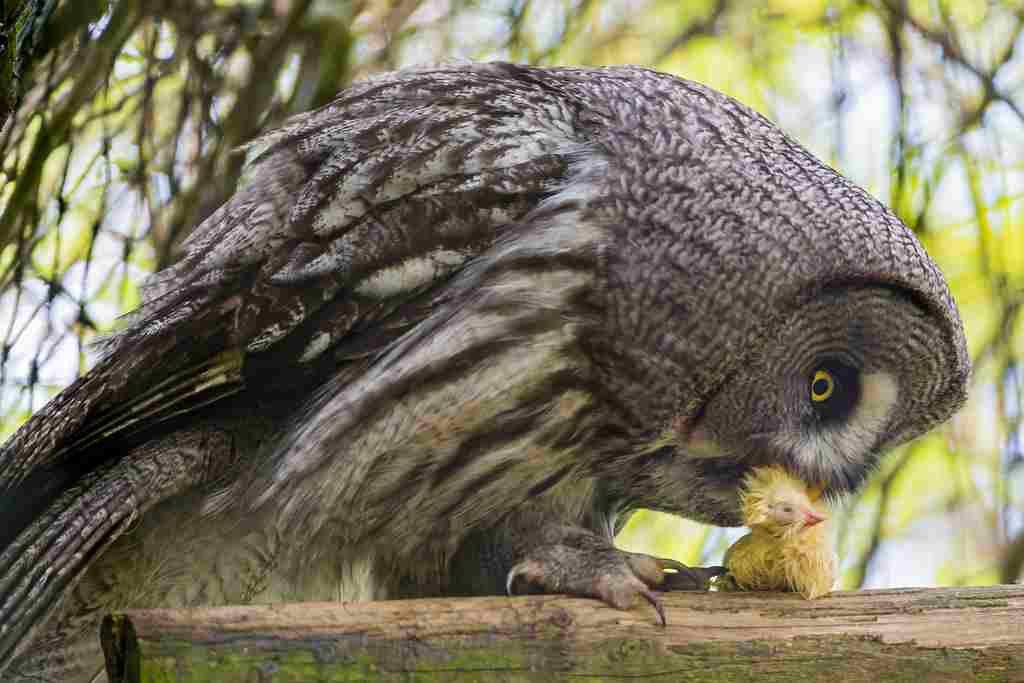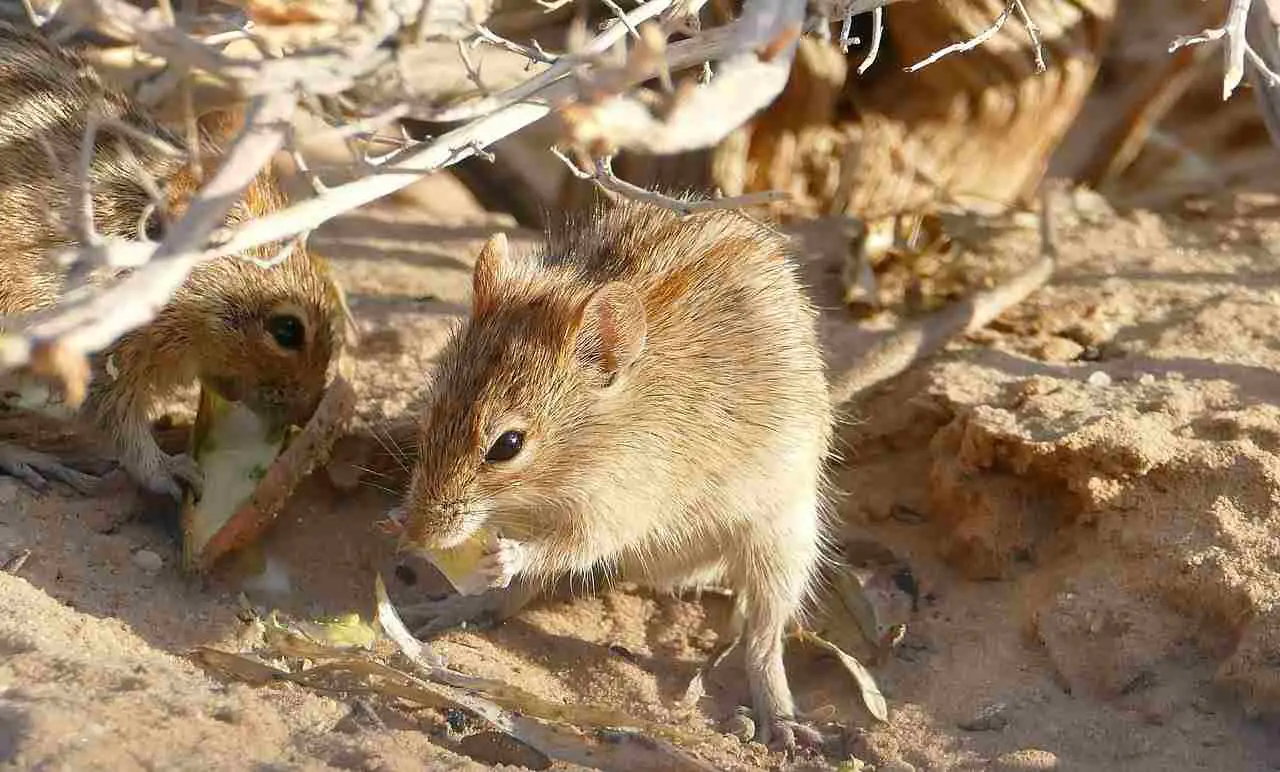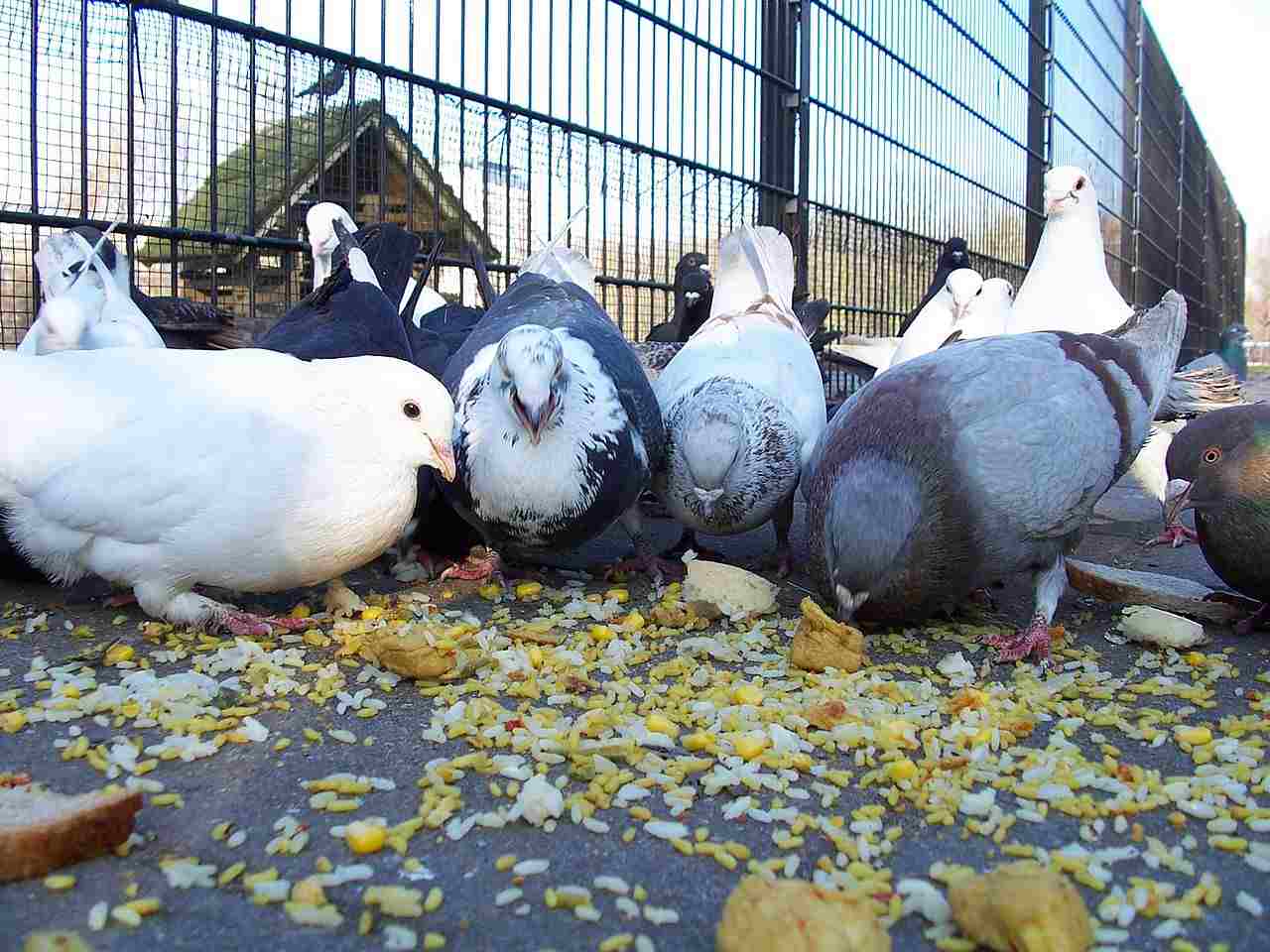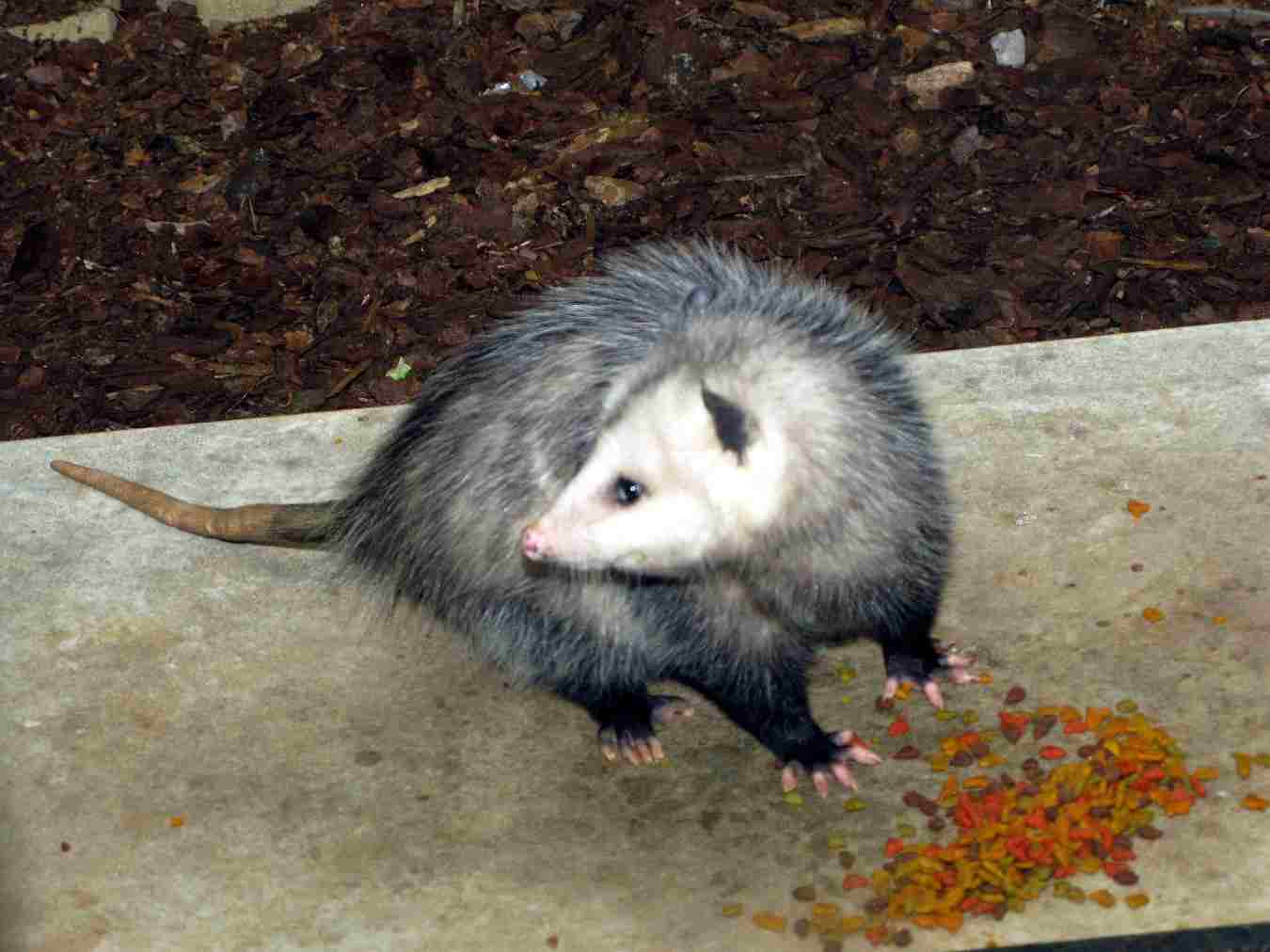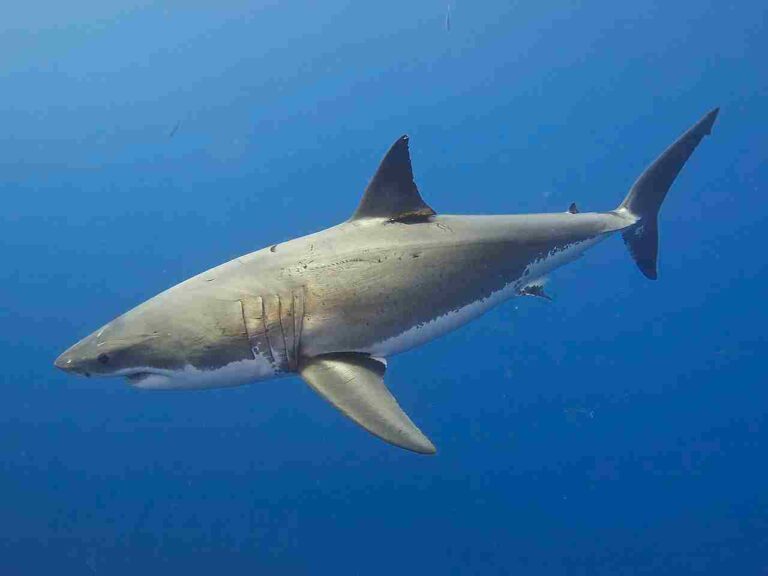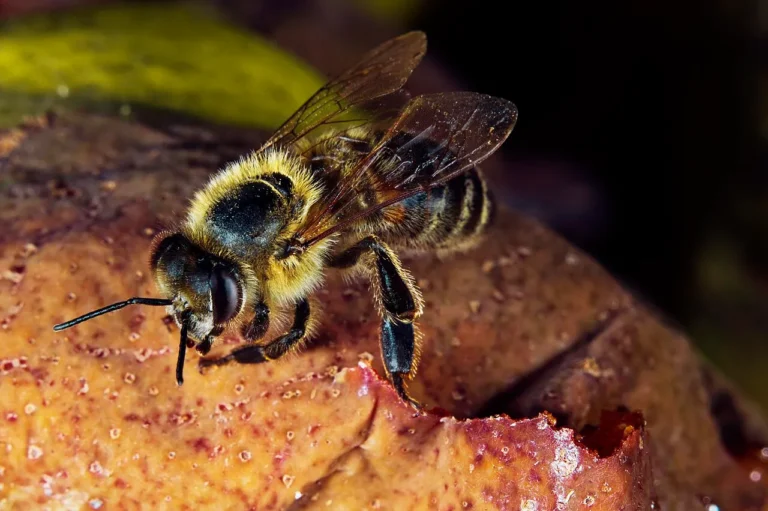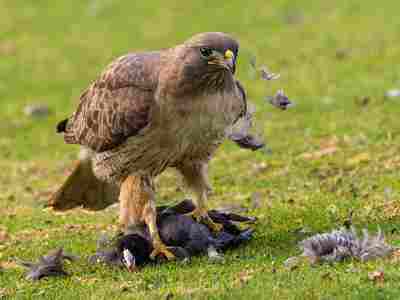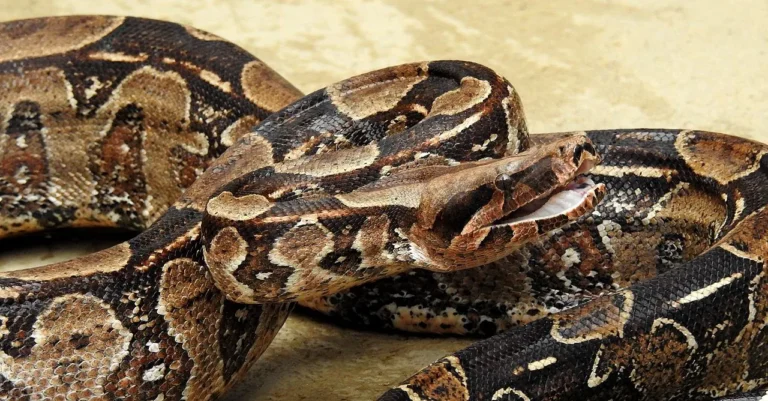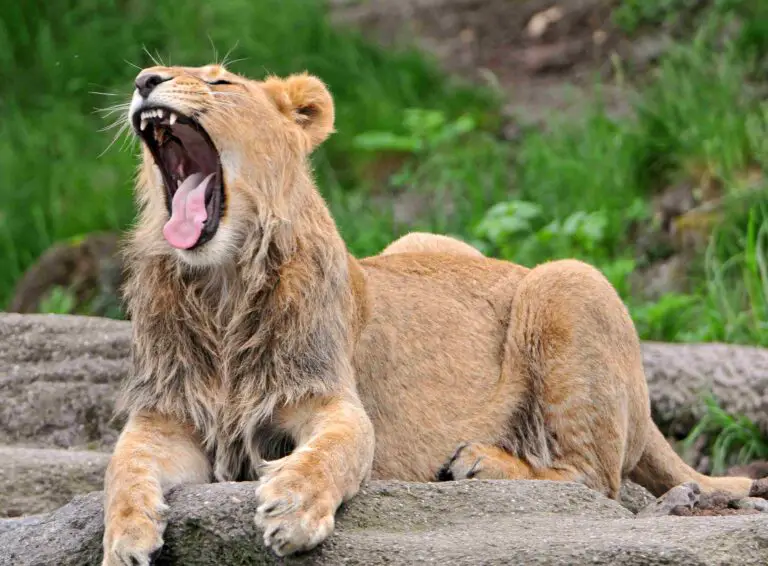Can You Eat Owls? 21+ Potential Owl Predators Discussed
While it is technically possible to eat owls, it is not a common, safe, or recommended practice. There are several factors that contribute to this. Firstly, there are legal restrictions in many countries that protect owls due to their ecological importance.
Secondly, consuming owls can pose health risks, as they may carry diseases or parasites. Lastly, owls have low palatability and are not typically considered a desirable food source. Additionally, hunting owls can be challenging due to their nocturnal and elusive nature. Therefore, it is generally advised to refrain from eating owls.
Why You Should Not Eat Owls
1). Legal Restrictions
In many countries, owls are protected and it is illegal to hunt or consume them. These legal restrictions are in place to ensure the conservation and preservation of owl populations. However, it is important to note that the specific restrictions may vary depending on the location and the species of owl.
Owls play a crucial role in maintaining the balance of ecosystems, and their protection is necessary to maintain the health and diversity of these habitats. By consuming owls, we disrupt the natural food chain and can cause imbalances in the ecosystem.
Furthermore, many owl species are already facing threats such as habitat degradation and fragmentation, leading to their decline and even endangerment. Eating owls would only exacerbate these issues and contribute to further ecological losses.
2). Ecological Implications
Owls are key predators in the natural ecosystem, playing a crucial role in maintaining the balance of the food chain. However, many owl species are currently facing threats such as habitat degradation and fragmentation, which has led to their decline and even endangerment.
By consuming owls, we contribute to further ecological losses and imbalances. Owls help control populations of small mammals and insects, which in turn helps regulate plant growth and maintain the health of ecosystems. Removing owls from the ecosystem disrupts this delicate balance and can have far-reaching consequences.
For example, without owls to control rodent populations, there could be an increase in crop damage and the spread of diseases carried by rodents. This can have negative impacts on agricultural productivity and human health. Additionally, the absence of owls can lead to an overabundance of certain prey species, which can negatively impact other species that rely on those prey for survival.
Protecting owls and their habitats is essential for maintaining the health and diversity of ecosystems.
3). Health Risks
Eating owls can pose significant health risks due to the presence of disease, pathogens, and parasites. Owls, being scavengers and raptors, are not generally considered healthy as food.
Owls can carry various diseases and pathogens that can be harmful to humans if consumed. These include bacterial infections, such as salmonella, which can cause severe gastrointestinal illness. Additionally, owls can harbor parasites like ticks and mites, which can transmit diseases to humans.
Furthermore, owls may accumulate toxins and pollutants in their bodies, especially if they feed on contaminated prey. These toxins can be passed on to humans through consumption, leading to potential health issues.
It is important to note that owls are not raised or prepared for human consumption, and their meat is not subject to the same safety regulations as livestock. Therefore, consuming owls can be risky and is not recommended.
By refraining from eating owls, we can protect ourselves from potential health hazards and contribute to the conservation of these magnificent creatures.
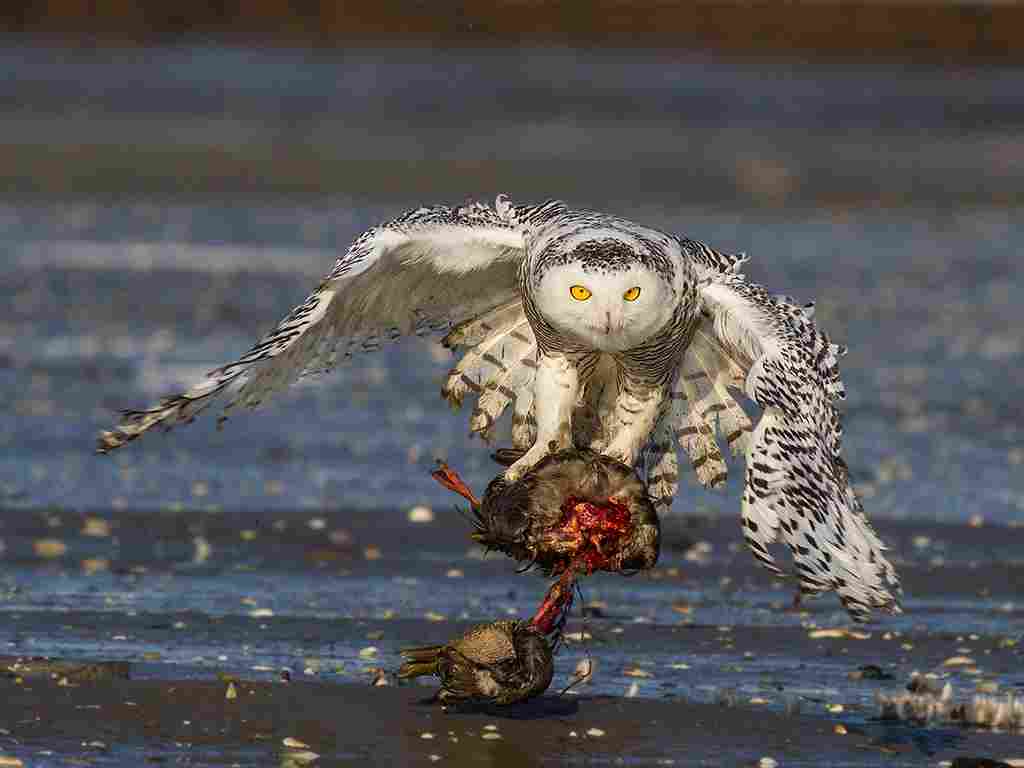
4). Low Palatability
Owls have a not particularly palatable taste, unlike chicken and turkey. This is one of the reasons why you should not eat owls. The meat of owls is known to have a strong, gamey flavor that may not appeal to everyone’s palate. Additionally, the texture of owl meat can be tough and chewy, making it less enjoyable to eat.
The low palatability of owl meat is due to several factors. Firstly, owls have a diet that consists mainly of small mammals, birds, and insects. This varied diet can contribute to the strong flavor of their meat. Secondly, owls are wild animals and their meat may not have the same tenderness and flavor as domesticated animals that are raised specifically for consumption.
What Animals Eat Owls? An Evaluation of Owl Predators
Animals that eat owls include; snakes, hawks, bears, wolves, coyotes, lions, bobcats, hyenas, bald eagles, skunks, vultures, lynxes, raccoons, tigers, polar bears, leopards falcons, ospreys, jaguars, and wild dogs. Others like squirrels can scavenge on owl remains.
It must be noted that the above list includes predators and scavengers in no particular order. Also, because owls are predators themselves, none of the listed animals will feed on owls as a normal or preferred part of their diet.
1). Snakes (Do Snakes Eat Owls?)
Snakes are known to be predators of owls, but it’s important to note that not all snake species can prey upon all owl species. Snakes primarily target juvenile owls, small-sized owl species, sick or injured owls, old owls, or owl eggs.
Among the snakes that eat owls, the majority are arboreal snakes that have the ability to climb trees. These snakes have adapted to hunting in the treetops where owls often nest. Arboreal snakes can be further categorized into two types: venomous and constrictor snakes.
Venomous snakes, such as certain species of vipers and pit vipers, possess venom that they use to immobilize their prey, including owls. These snakes inject venom into their prey, causing paralysis or death. Once the owl is immobilized, the snake can consume it.
Constrictor snakes, on the other hand, rely on their powerful bodies to subdue and suffocate their prey. They wrap their bodies around the owl, exerting pressure and preventing it from breathing. This method of hunting is particularly effective against smaller owl species.
It’s worth noting that while snakes are capable of eating owls, it is not a common or preferred part of their diet. Owls are predators themselves, and they possess sharp talons and beaks that can be used for defense. This makes them a challenging prey for snakes, and they are more likely to target smaller, more vulnerable owls.
Types of Snakes that Eat Owls
Most snakes that eat owls or their eggs are arboreal, meaning they have adapted to hunting in trees. There are two main types of snakes that prey on owls: venomous arboreal snakes and arboreal constrictor snakes.
Venomous arboreal snakes, such as certain species of vipers and pit vipers, possess venom that they use to immobilize their prey, including owls. These snakes inject venom into their prey, causing paralysis or death. Once the owl is immobilized, the snake can consume it. Examples of venomous arboreal snakes that eat owls include the Eastern diamondback rattlesnake and the bushmaster snake.
Arboreal constrictor snakes, on the other hand, rely on their powerful bodies to subdue and suffocate their prey. They wrap their bodies around the owl, exerting pressure and preventing it from breathing. This method of hunting is particularly effective against smaller owl species. Examples of arboreal constrictor snakes that eat owls include the green tree python and the emerald tree boa.
It’s important to note that not all snake species can prey upon all owl species. Snakes primarily target juvenile owls, small-sized owl species, sick or injured owls, old owls, or owl eggs.
i). Venomous, Arboreal Snakes
Venomous, arboreal snakes are a type of snake that preys on owls. These snakes possess venom that they use to immobilize their prey, including owls. Examples of venomous, arboreal snakes that eat owls include the Eastern diamondback rattlesnake and the bushmaster snake. These snakes can be found in various regions and habitats, such as forests, jungles, and tropical rainforests.
The main prey of venomous, arboreal snakes includes small-sized owl species, juvenile owls, sick or injured owls, old owls, and owl eggs. These snakes are well-adapted to hunting in trees, where they can ambush their prey from above. They strike quickly and inject venom into their prey, causing paralysis or death. Once the owl is immobilized, the snake can consume it.
It’s important to note that not all snake species can prey upon all owl species. Venomous, arboreal snakes primarily target vulnerable owls or those that are easier to subdue. They play a crucial role in the natural balance of ecosystems by controlling owl populations and preventing overpopulation.
ii). Arboreal Constrictor Snakes
Arboreal constrictor snakes, like the corn snake, are another type of snake that preys on owls. These snakes are known for their ability to climb trees and ambush their prey from above. They can be found in various regions and habitats, such as forests, jungles, and tropical rainforests.
Arboreal constrictor snakes primarily target small to medium-sized owl species as their main prey. They use their powerful bodies to constrict and suffocate the owls, making them unable to escape. Once the owl is immobilized, the snake will then consume it.
Examples of arboreal constrictor snakes that eat owls include the green tree python and the emerald tree boa. These snakes are well-adapted to their arboreal lifestyle and have specialized features that help them in hunting and capturing owls.
It’s important to note that not all owl species are targeted by arboreal constrictor snakes. They typically prey on owls that are within their size range and are easier to subdue. By preying on owls, arboreal constrictor snakes play a role in maintaining the balance of owl populations and the overall ecosystem.
2). Hawks (Do Hawks Eat Owls?)
Hawks are one of the animals that prey on owls, especially the larger species. They are known for their impressive hunting skills and agility in the air. Hawks can be found in various regions and habitats, including forests, grasslands, and open areas.
Examples of hawks that eat owls include the red-tailed hawk and the great horned owl. These hawks have sharp talons and beaks that enable them to capture and kill owls. They use their keen eyesight to spot their prey from a distance and then swoop down to attack.
Hawks primarily prey on owls using their powerful talons to grasp and immobilize them. Once the owl is captured, the hawk will use its sharp beak to deliver a fatal blow. Owls are a significant part of the hawk’s diet, especially smaller owl species.
It’s important to note that hawks play a crucial role in controlling owl populations and maintaining the balance of the ecosystem. They help regulate the number of owls and prevent overpopulation.
3). Foxes (Do Foxes Eat Owls?)
Foxes are another animal that preys on owls, particularly larger species like the red fox. While foxes are not typically known for hunting owls, there have been instances where they have been observed preying on these birds. It’s important to note that foxes are opportunistic predators and their diet can vary depending on the availability of prey in their habitat.
In some cases, foxes may occur in areas where owls are present, such as near rivers or in wooded areas. In these situations, small foxes may become prey for owls, but it is less common for foxes to actively hunt and consume owls.
However, there have been documented cases of foxes preying on owls, especially larger owl species. For example, the red fox has been known to target owls as part of its diet. The red fox is a versatile predator that can be found in various habitats, including forests, grasslands, and urban areas.
When hunting owls, foxes typically use their agility and stealth to approach their prey. They rely on their keen senses, particularly their hearing and vision, to locate and stalk owls. Once in close proximity, foxes will pounce on the owl, using their sharp teeth and claws to immobilize and kill it.
While owls are not a primary food source for foxes, they may be opportunistically targeted when other prey is scarce. Foxes have a diverse diet that includes small mammals, birds, insects, and even fruits and vegetables. Owls may be considered as a potential food source for foxes in certain circumstances.
It must also be noted that foxes can also prey on vulnerable owls in some cases.
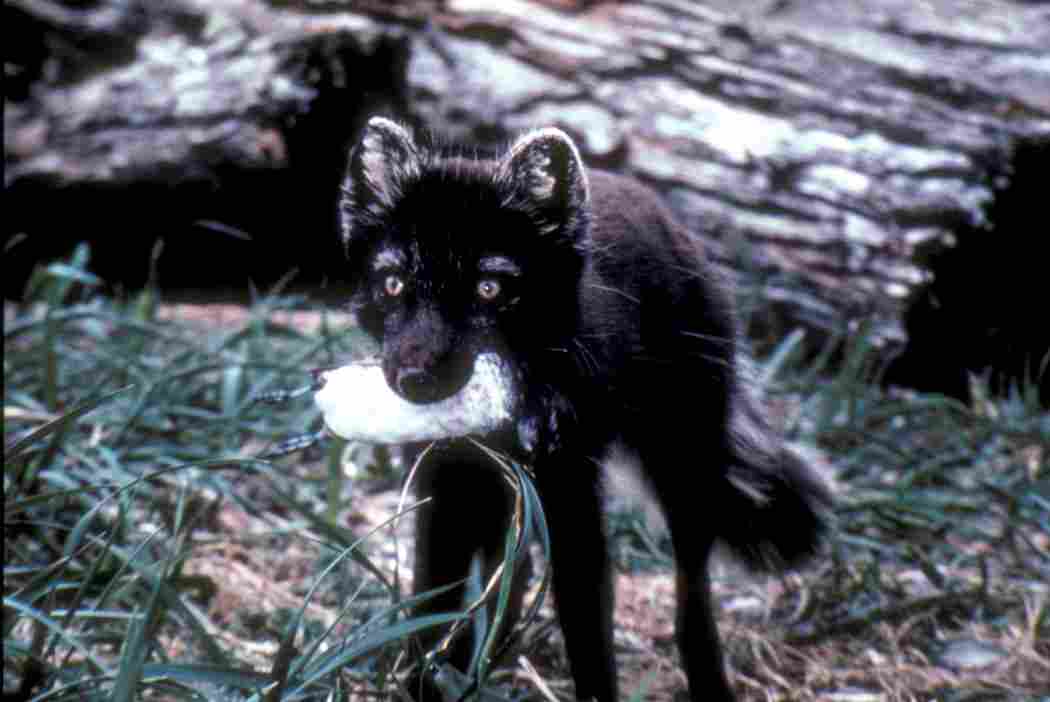
4). Bears (Do Bears Eat Owls?)
Bears are opportunistic predators that have been known to scavenge and consume a variety of prey, including owls. While bears are not typically considered primary predators of owls, there have been documented cases of bears preying on these birds, especially larger owl species.
Bears can be found in various habitats, including forests, mountains, and tundra regions. In these areas, they may come across owls and opportunistically target them as a potential food source. However, it’s important to note that bears primarily rely on plant material and other sources of food, such as berries, nuts, and insects.
When bears do prey on owls, they may use their size and strength to overpower the bird. Bears have powerful jaws and sharp claws that can immobilize and kill their prey. They may also use their keen sense of smell to locate owls in their habitat.
5). Owls (Do Wolves Eat Owls?)
Owls are fascinating creatures known for their nocturnal habits and exceptional hunting skills. While they are skilled predators themselves, there are certain animals that pose a threat to owls, including wolves. Wolves, however, are not commonly known to eat owls as a primary food source.
Wolves are carnivorous animals that primarily prey on ungulates such as deer, elk, and moose. They are highly adapted to hunting and have a diverse diet, but owls are not typically a part of their regular prey. Wolves tend to focus on larger mammals that provide them with the necessary sustenance.
In rare cases, larger owl species such as the eagle owl or the horned owl may become prey for wolves. These larger owls may be targeted by wolves if they are in close proximity and present an opportunity for a meal. However, it is important to note that this is not a common occurrence.
Wolves are more likely to prey on smaller mammals such as rodents, rabbits, and smaller ungulates. These animals are easier to catch and provide a sufficient amount of food for the wolves. Owls, especially the larger species, are not typically a part of their main prey.
6). Coyotes (Do Coyotes Eat Owls?)
Coyotes are opportunistic predators that have a varied diet, which includes small mammals, birds, and even carrion. While they are known to scavenge on remains, the chances of them catching an owl at ground level are extremely low. Coyotes are not typically considered a primary predator of owls.
However, in rare cases, larger owl species like the great horned owl or the barred owl may become prey for coyotes. These larger owls may be targeted by coyotes if they are in close proximity and present an opportunity for a meal. It’s important to note that this is not a common occurrence and coyotes generally focus on smaller prey.
Coyotes are more likely to prey on small mammals such as rodents, rabbits, and squirrels. These animals are easier to catch and provide a sufficient amount of food for the coyotes. Owls, especially the larger species, are not typically a part of their main prey.
7). Lions (Do Lions Eat Owls?)
Lions, known as the kings of the savanna, are powerful predators that primarily feed on large herbivores such as zebras, wildebeests, and buffalo. While lions are not typically known to prey on owls, there have been rare instances where they have been observed hunting and consuming these nocturnal birds.
In savannas with short trees, lions may have an advantage in spotting and capturing owls that roost on low branches. However, due to their relatively poor climbing ability, lions have a low success rate when it comes to hunting owls. Their large size and lack of agility make it challenging for them to navigate the branches and capture these elusive birds.
Although lions are not considered primary predators of owls, they have been known to occasionally prey on other birds, including smaller raptors and ground-dwelling species. This opportunistic behavior may extend to owls if the circumstances align, such as when an owl is injured or unable to fly.
In terms of their habitat, lions can be found in various regions across Africa, including grasslands, open woodlands, and semi-arid areas. While they are not commonly associated with dense forests or heavily wooded areas, they may occasionally venture into these habitats in search of prey.
When it comes to hunting owls, lions primarily rely on their exceptional vision and stealth to approach their prey undetected. They may use their powerful jaws and sharp teeth to deliver a swift and fatal bite, ensuring a successful kill. However, it’s important to note that owls are not a main prey item for lions, and their diet mainly consists of larger herbivores.
8). Bobcats (Do Bobcats Eat Owls?)
Bobcats are medium-sized wild cats that can be found in a variety of habitats, including semiarid woodlands, forests, and swamplands. While they are not commonly known for preying on owls, there have been instances where bobcats have been observed hunting and consuming these nocturnal birds.
In terms of their diet, bobcats are opportunistic predators and will consume a wide range of prey, including small mammals, birds, and reptiles. While they primarily feed on rabbits and rodents, they have been known to target birds when the opportunity arises. This includes smaller raptors and ground-dwelling species, such as owls.
Bobcats are skilled hunters and rely on their keen senses, including their excellent vision and hearing, to locate and capture their prey. They are agile climbers and can navigate through trees and branches with relative ease, making them capable of reaching owl roosts in higher locations.
When hunting owls, bobcats use their stealth and patience to approach their prey undetected. They may stalk their target, waiting for the perfect moment to pounce and deliver a swift and fatal bite. However, it’s important to note that owls are not a primary food source for bobcats, and their diet mainly consists of small mammals.
The presence of bobcats in an area can have an impact on owl populations, especially if the bobcat population is high and prey resources are limited. In such cases, bobcats may turn to hunting owls as an alternative food source. However, this is not a common occurrence and is more likely in situations where other prey options are scarce.
9). Other Cats (Do Cats Eat Owls?)
In addition to bobcats, there are other species of cats that have been known to prey on owls. These include leopards, ocelots, jaguars, and even some domestic and feral cats. While it is not common for cats to specifically target owls as prey, there have been instances where they have been observed hunting and consuming these nocturnal birds.
Cats, both wild and domestic, are skilled hunters with sharp claws and teeth. They have the agility and stealth to approach their prey undetected, making them capable of hunting owls. However, it’s important to note that owls are not a primary food source for cats, and their diet mainly consists of small mammals.
In some cases, owls can also prey on small cats, especially kittens and juveniles. This can occur when owls are in need of food and come across vulnerable cat individuals. However, such instances are relatively rare and usually happen in areas where owls and cats share the same habitat.
The presence of cats in an area can have an impact on owl populations, particularly if the cat population is high and prey resources are limited. In such situations, cats may turn to hunting owls as an alternative food source. However, it’s important to remember that this behavior is not widespread among cats and is more likely to occur in specific circumstances.
10). Hyenas (Do Hyenas Eat Owls?)
Hyenas are known for their scavenging behavior, but they are also capable predators that can either prey on or scavenge a variety of animals. While hyenas are opportunistic feeders and can consume a wide range of prey, it is rare for them to specifically target owls as a food source. This is mainly because owls are not commonly found in arid or semiarid habitats, which are the preferred habitats of hyenas.
However, in certain circumstances where owls and hyenas share the same habitat, hyenas may come across owls and consume them. This can happen if the owl is already dead or injured, making it an easy target for the hyenas. In such cases, hyenas will scavenge on the owl carcass rather than actively hunting and killing the owl.
Hyenas have powerful jaws and strong teeth, which allow them to crush and consume bones, feathers, and fur. This makes them well-equipped to scavenge on owl remains if they come across them. However, it’s important to note that hyenas primarily rely on larger prey such as ungulates for their main source of food.
In terms of predation, hyenas are more likely to prey on smaller mammals such as rodents, hares, and even small antelope. These are the main prey items that hyenas actively hunt and kill. Owls, with their nocturnal habits and ability to fly, are not typically within the range of prey that hyenas actively pursue.
11). Bald Eagles (Do Bald Eagles Eat Owls?)
Bald eagles, as one of the largest raptors, have a diverse diet that includes fish, small mammals, and birds. While they primarily feed on fish, bald eagles are known to opportunistically scavenge on carrion and prey on a variety of animals. This raises the question of whether bald eagles eat owls.
In certain circumstances, bald eagles may prey on owls. Owls can be seen as potential prey for bald eagles due to their size and availability. Bald eagles have been observed hunting and capturing owls, especially smaller species such as screech owls and saw-whet owls. They have the strength and agility to overpower owls in mid-air or snatch them from perches.
However, it’s important to note that bald eagles are not specialized owl predators. Owls are not a primary food source for bald eagles, and they are more likely to prey on fish and small mammals. Bald eagles may scavenge on owl carcasses if they come across them, but actively hunting and killing owls is not their main hunting strategy.
12). Skunks (Do Skunks Eat Owls?)
Skunks are opportunistic feeders that mostly scavenge for food. While they are not known to be specialized owl predators, there have been instances where skunks have been observed eating owls. Skunks are omnivorous animals, and their diet consists of a variety of foods, including insects, small mammals, birds, eggs, fruits, and carrion.
In terms of owls, skunks may prey on them using their sharp claws and teeth. However, it is important to note that skunks are not the primary predators of owls. They are more likely to target smaller prey such as rodents and insects. Owls may become a part of their diet if they come across an injured or weakened owl or if there is a scarcity of their usual prey.
Skunks are found in various habitats across North and Central America, including forests, grasslands, and urban areas. They are adaptable creatures and can thrive in different environments. This wide distribution increases the chances of skunks encountering owls in their natural habitats.
While skunks may occasionally prey on owls, it is not a common occurrence. Owls are typically larger and more powerful than skunks, making them less vulnerable to predation. Skunks are more likely to scavenge on owl carcasses rather than actively hunt and kill them.
13). Vultures (Do Vultures Eat Owls?)
Vultures are known for their scavenging behavior and mostly consume the remains of dead animals. While they are not typically considered owl predators, there have been instances where vultures have been observed feeding on owls. Vultures play an important role in the ecosystem by cleaning up carrion and preventing the spread of diseases.
Examples of vultures that may be found in different parts of the world include the Turkey Vulture, Black Vulture, and Egyptian Vulture. These birds have specialized adaptations for scavenging, such as sharp beaks and strong digestive systems that can handle decaying flesh.
In rare cases, vultures may prey on owls using their powerful beaks and talons. However, owls are not their main prey. Vultures primarily target larger carrion, such as mammals or reptiles, that provide a more substantial meal. Owls are not typically a significant part of their diet.
Vultures can be found in various habitats, including forests, grasslands, and deserts.
14). Lynxes (Do Lynxes Eat Owls?)
Lynxes are feline predators that are known for their stealth and agility. While they are not as skilled climbers as some other predators, such as hawks or arboreal snakes, lynxes have been observed preying on owls in certain situations.
Lynxes are primarily found in forested areas, where they blend in with their surroundings and use their keen senses to locate prey. They have a wide distribution, with different species of lynxes found in various parts of the world, including North America, Europe, and Asia.
When it comes to hunting owls, lynxes rely on their sharp vision and hearing to detect their prey. They are opportunistic hunters and will take advantage of any available food source, including owls. However, owls are not a primary part of their diet. Lynxes typically target smaller mammals, such as rabbits and rodents, as their main prey.
In some cases, lynxes may come across an owl and attempt to prey on it using their powerful paws and sharp teeth. However, these instances are relatively rare, and owls are not a significant part of a lynx’s diet. Lynxes are more likely to focus on smaller mammals that provide a more substantial meal.
Lynxes are solitary animals and are well-adapted to their forested habitats. They have excellent camouflage and can move silently through the underbrush, making them effective hunters. While they may occasionally prey on owls, it is not a common occurrence.
15). Racoons (Do Raccoons Eat Owls?)
Raccoons are opportunistic predators that have been known to prey on owls in certain circumstances. While they are not the primary predators of owls, raccoons have been observed hunting and consuming them.
Raccoons are native to North America but have also been introduced to other parts of the world. They are adaptable animals that can thrive in a variety of habitats, including forests, urban areas, and wetlands. This wide distribution allows them to come into contact with owls in different regions.
When it comes to hunting owls, raccoons utilize their sharp claws and dexterous paws to capture their prey. They are skilled climbers and can easily access owl nests located in trees or other elevated areas. Raccoons are known for their ability to manipulate objects, and they may use this skill to extract owls from their nests.
While raccoons primarily feed on a diet of fruits, nuts, insects, and small mammals, they are opportunistic feeders and will take advantage of any available food source, including owls. However, owls are not a significant part of their diet, and they are more likely to target smaller prey that provides a more substantial meal.
Raccoons are nocturnal animals, which means they are most active during the night. This nocturnal behavior allows them to avoid competition with other predators and increases their chances of successfully hunting owls. They have excellent night vision and a keen sense of hearing, which helps them locate and capture their prey.
16). Tigers (Do Tigers Eat Owls?)
Tigers, although rarely, are known to be predators that occasionally consume owls. While owls are not a primary food source for tigers, there have been instances where tigers have been observed hunting and feeding on these birds.
In the wild, tigers can be found in various regions of Asia, including India, Russia, and Southeast Asian countries. Their habitats range from dense forests to grasslands, providing them with diverse ecosystems where they may encounter owls.
When it comes to hunting owls, tigers utilize their exceptional strength, agility, and stealth to capture their prey. Tigers are powerful predators, capable of taking down large animals such as deer and wild boars. However, they are also opportunistic hunters and will target smaller prey if the opportunity arises, including owls.
Tigers are known for their ability to stalk their prey silently, using their camouflage to blend into their surroundings. This stealthy approach allows them to get close to their target without being detected. Once within striking distance, tigers use their sharp claws and powerful jaws to deliver a swift and lethal attack.
While owls are not a significant part of a tiger’s diet, they may prey on them when other food sources are scarce or when the opportunity presents itself. Tigers have a varied diet that includes a wide range of animals, and owls can be considered as occasional prey.
It’s important to note that tigers are apex predators and play a crucial role in maintaining the balance of their ecosystems. They primarily prey on herbivores, which helps control their populations and prevents overgrazing. Owls, although not a primary food source, contribute to the overall biodiversity of the ecosystem and are part of the natural food chain.
17). Polar Bears (Do Polar Bears Eat Owls?)
Polar bears, although not commonly known as predators of owls, are opportunistic hunters and have been observed consuming these birds on rare occasions. While owls are not a primary food source for polar bears, they may prey on them if the opportunity arises.
Polar bears are primarily found in the Arctic regions, where they inhabit sea ice and coastal areas. Their main prey includes seals, fish, and marine mammals. However, polar bears are known to have a diverse diet and will consume other animals if they come across them.
When it comes to hunting owls, polar bears utilize their excellent swimming and hunting skills. They may encounter owls in coastal areas or when they are exploring new territories. Polar bears are capable swimmers and can cover long distances in search of food.
While there is limited information on specific instances of polar bears preying on owls, it is possible that they may target them as part of their opportunistic feeding behavior. Owls, being smaller in size, may be considered as potential prey by polar bears if they are available and accessible.
18). Leopards (Do Leopards Eat Owls?)
Leopards are one of the most common mammalian predators of owls. With their excellent climbing abilities and agility, they are well-equipped to hunt and capture these birds. While leopards primarily prey on small to medium-sized mammals, they are opportunistic hunters and will consume other animals if the opportunity arises.
In terms of their diet, leopards are known to eat a variety of prey, including birds. Owls are among the animals that leopards may target as part of their hunting behavior. Leopards are found in various habitats across Africa and parts of Asia, and they have been observed preying on owls in these regions.
Leopards are stealthy hunters and rely on their camouflage and patience to ambush their prey. They are capable of climbing trees and may encounter owls in their natural habitats. When hunting owls, leopards utilize their agility and stealth to get close to their prey before launching a swift attack.
The main prey of leopards includes small to medium-sized mammals such as antelopes, deer, and monkeys. However, they are known to have a diverse diet and will take advantage of any available food source. This opportunistic feeding behavior extends to owls, which may be targeted by leopards if they are present in the area.
Leopards are solitary animals and are known for their ability to adapt to various environments. They can be found in forests, grasslands, and even urban areas. This wide distribution increases the chances of leopards encountering owls in their habitats.
19). Falcons (Do Falcons Eat Owls?)
Falcons are known to be skilled hunters and are capable of capturing a variety of prey, including owls. While they primarily target smaller owl species, larger falcons have been observed preying on larger owl species as well. Falcons are found in various regions around the world and can be seen in diverse habitats such as forests, grasslands, and even urban areas.
One example of a falcon species that preys on owls is the Peregrine Falcon. This magnificent bird of prey is known for its incredible speed and agility, which allows it to swoop down on its unsuspecting prey with precision. Peregrine Falcons have been observed hunting and feeding on owls, particularly smaller species such as the Western Screech-Owl and the Northern Saw-whet Owl.
Another falcon species that may prey on owls is the Merlin. These small falcons are adept at hunting in dense vegetation and are known to target a variety of bird species, including owls. Merlins have been observed hunting owls such as the Burrowing Owl and the Short-eared Owl.
Falcons use a combination of speed, agility, and keen eyesight to locate and capture their prey. They are known for their impressive aerial hunting techniques, which involve high-speed dives and acrobatic maneuvers. Falcons may prey on owls by launching surprise attacks from above, using their sharp talons to grasp and immobilize their prey.
The main prey of falcons includes small to medium-sized birds, such as songbirds, pigeons, and waterfowl. However, they are opportunistic hunters and will take advantage of any available food source, including owls. Falcons are known for their ability to adapt to different environments and can be found in a wide range of habitats across the globe.
20). Ospreys (Do Ospreys Eat Owls?)
Ospreys, also known as fish hawks, are magnificent birds of prey that primarily feed on fish. While their diet mainly consists of fish, there have been rare instances where ospreys have been observed preying on owls. However, it is important to note that these instances are not common and ospreys do not typically rely on owls as a food source.
Ospreys are found in various regions around the world, including North America, Europe, and Asia. They are commonly seen near bodies of water such as lakes, rivers, and coastal areas, where they can easily spot and catch fish. Their unique adaptations, such as sharp talons and reversible outer toes, enable them to grasp and carry fish with ease.
Although ospreys primarily feed on fish, they are opportunistic hunters and may occasionally prey on other small animals, including owls. However, this behavior is not typical and is considered rare. Owls are not a preferred food source for ospreys, and they are more likely to target fish due to their specialized hunting techniques and adaptations.
Ospreys use their keen eyesight to locate fish from high above the water. Once they spot a fish, they hover in mid-air before diving feet-first to catch their prey. Their sharp talons allow them to grasp the fish firmly, and they use their powerful wings to lift themselves out of the water and fly away with their catch.
The main prey of ospreys includes various species of fish, such as trout, bass, and mullet. They are highly skilled at catching fish and have been observed diving into the water from heights of up to 100 feet. Ospreys have also been known to catch other small aquatic animals, such as crabs and amphibians, but their diet primarily consists of fish.
21). Jaguars (Do Jaguars Eat Owls in the Rainforest?)
Jaguars are one of the animals that prey on owls in the rainforest. These powerful predators can be found in the dense forests of Central and South America, where they roam stealthily in search of their next meal. While jaguars are primarily known for hunting larger prey such as deer and capybaras, they have been observed preying on owls as well.
In the rainforest, jaguars have a diverse diet that includes a variety of animals. They are opportunistic hunters and will take advantage of any available food source. This includes owls that may be nesting or roosting in the trees. Jaguars are skilled climbers and can easily navigate the dense vegetation to reach their prey.
When hunting owls, jaguars use their keen senses to locate their target. Their excellent eyesight and hearing allow them to detect the presence of owls, even in the dark of night. Once they have located an owl, jaguars rely on their powerful jaws and sharp teeth to capture and kill their prey. With a quick and precise bite, they can deliver a fatal blow to the owl.
While owls are not the main prey of jaguars, they are still a part of their diet in the rainforest. Jaguars have a wide range of prey options, including monkeys, rodents, reptiles, and birds. Owls provide a smaller, but still significant, food source for these apex predators.
22). Dogs (Do Dogs Eat Owls?)
Dogs, particularly wild or feral ones, are opportunistic predators that may occasionally prey on owls. While dogs are not typically known for hunting owls, there have been instances where small dogs have been attacked by owls. However, it is important to note that these cases are relatively rare and not the norm.
When it comes to dogs eating owls, it is more common for owls to prey on small dogs rather than the other way around. Owls are skilled hunters with sharp talons and beaks, making them capable of capturing and killing small animals, including dogs. However, it is important to remember that such occurrences are uncommon and typically happen in specific circumstances.
In terms of animals that eat owls, dogs are not the primary predators. Other animals, such as larger birds of prey like hawks and eagles, as well as mammals like foxes and bobcats, are more likely to prey on owls. These predators have adaptations and hunting strategies that make them better suited for capturing and consuming owls.
23). Do Squirrels Eat Owls?
Squirrels, being omnivorous and opportunistic feeders, have a varied diet that includes nuts, seeds, fruits, insects, and even small vertebrates. While it is possible for squirrels to eat owls (especially their carcasses/carrion), it is important to note that they are not natural predators or consumers of owls. In fact, it is extremely rare for squirrels to consume the remains of owls.
On the contrary, it is more common for owls to prey on squirrels. Owls are skilled hunters with excellent night vision and silent flight, making them well-equipped to capture small mammals like squirrels. Owls primarily hunt by swooping down from above and using their sharp talons to grasp their prey. Squirrels, being small and agile, are often targeted by owls as a source of food.
Although squirrels are not known to be predators of owls, there have been rare instances where squirrels have been observed feeding on owl eggs or nestlings. However, these occurrences are few and far between, and they do not represent the typical behavior of squirrels.
In terms of animals that eat owls, squirrels are not considered significant predators. Other animals, such as larger birds of prey like hawks and eagles, as well as mammals like foxes and bobcats, are more likely to prey on owls. These predators have adaptations and hunting strategies that make them better suited for capturing and consuming owls.
Do People Eat Owls?
No, people do not usually eat owls for various reasons. Firstly, it is not considered a healthy choice. Owls, like many birds of prey, may carry diseases and parasites that can be harmful to humans if consumed. Additionally, owls may accumulate toxins in their bodies from the prey they consume, such as rodents that have been exposed to pesticides or other chemicals. Therefore, it is not advisable to eat owls due to potential health risks.
Secondly, there are legal restrictions in place that protect many species of owls. Owls are often protected under wildlife conservation laws, as they are considered important for maintaining ecological balance. In many areas and states, it is illegal to hunt, capture, or consume owls. These laws aim to preserve owl populations and prevent their decline.
Furthermore, owls are not known for their palatability. Their meat is not commonly sought after for culinary purposes. Instead, people prefer to eat other birds such as chicken or ducks, which are more readily available and have been bred specifically for consumption. These birds are often raised in controlled environments, ensuring their safety and quality as food sources.
Is it Legal to Eat Owls?
In many areas and states, it is not legal to eat owls due to laws protecting these majestic birds. Owls, especially endangered or threatened species like the spotted owl, are often safeguarded under wildlife conservation laws. These laws aim to preserve owl populations and prevent their decline.
The legal restrictions on eating owls are in place for several reasons. Firstly, owls play a crucial role in maintaining ecological balance. They help control populations of rodents and other small animals, which can have a significant impact on ecosystems if left unchecked. By protecting owls, we ensure the health and stability of our natural environments.
Secondly, owls are considered important cultural and spiritual symbols in many societies. They are revered for their wisdom, grace, and beauty. Eating owls would be seen as disrespectful and could be considered taboo in certain cultures.
Furthermore, owls are not commonly consumed for culinary purposes. Their meat is not sought after due to its low palatability and the availability of other more desirable bird species for consumption. Birds like chicken or ducks are more commonly consumed as they have been bred specifically for food and are raised in controlled environments.
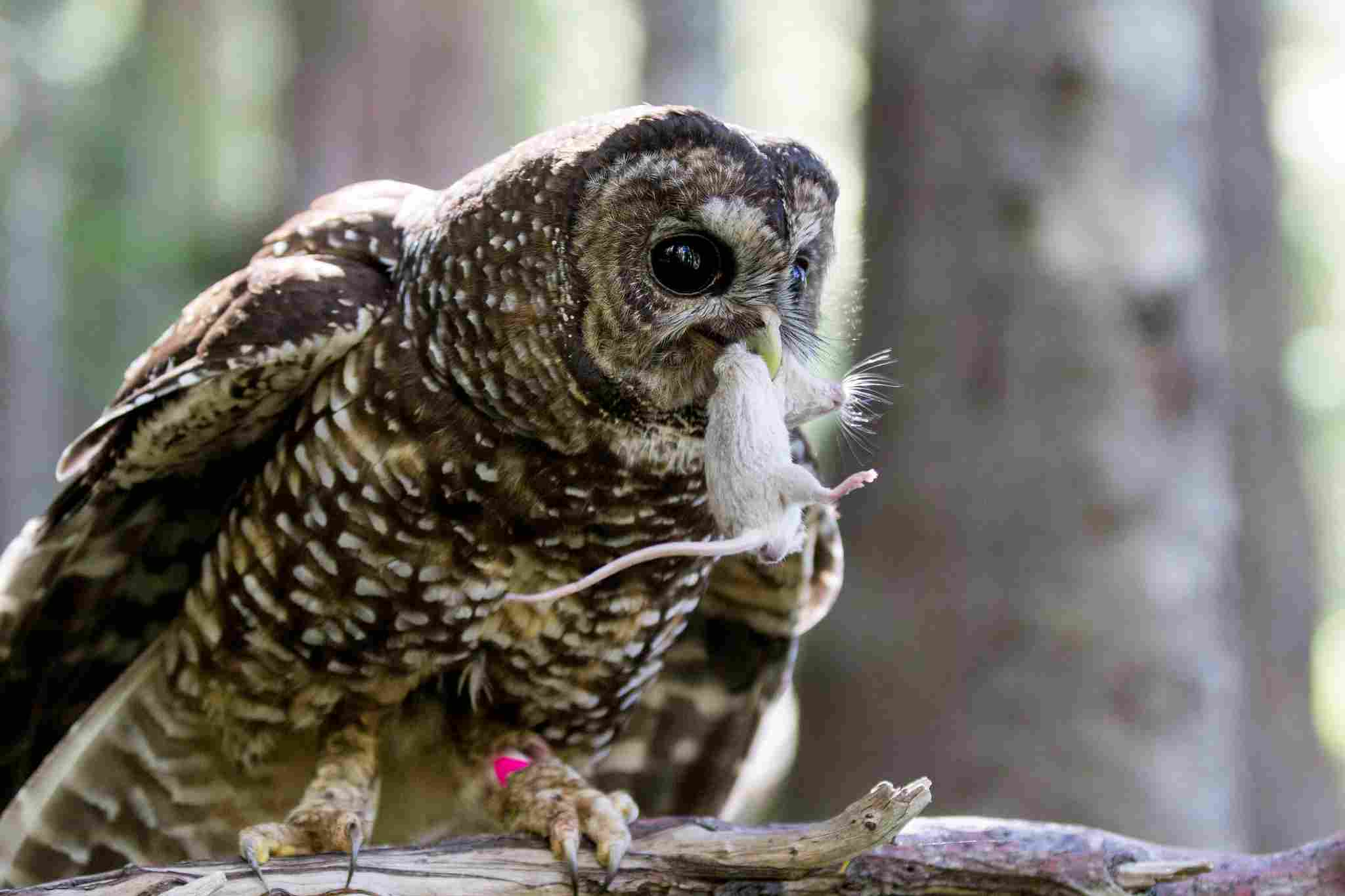
Conclusion
- In conclusion, this article has explored various aspects related to eating owls and the predators that consume them. We have discussed the legal restrictions surrounding the consumption of owls, highlighting the importance of wildlife conservation and the cultural significance of these birds.
- Additionally, we have examined the ecological implications of eating owls, emphasizing their role in maintaining the balance of ecosystems by controlling populations of rodents and other small animals.
- Furthermore, we have delved into the health risks associated with consuming owls, as well as their low palatability compared to other bird species commonly consumed for culinary purposes. Throughout the article, we have evaluated different predators that prey on owls, including snakes, hawks, foxes, bears, and other animals.
